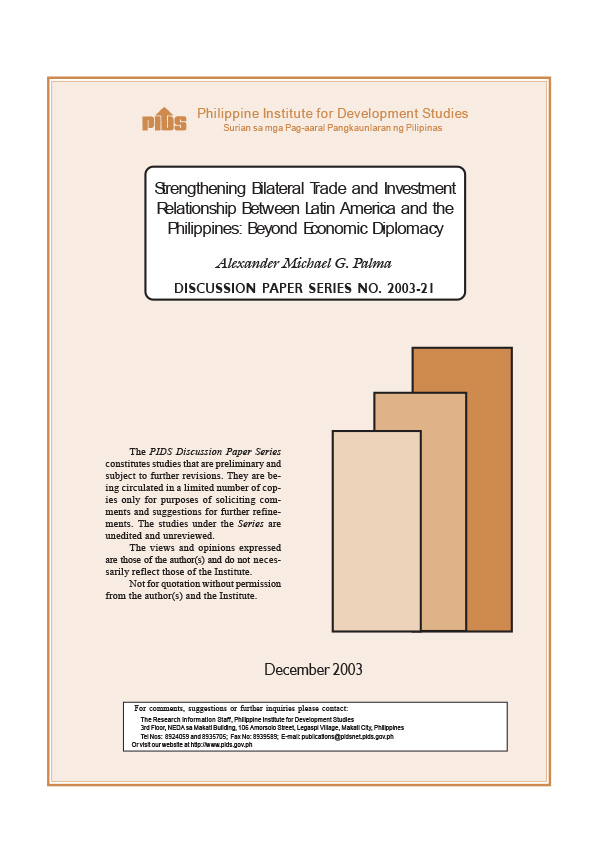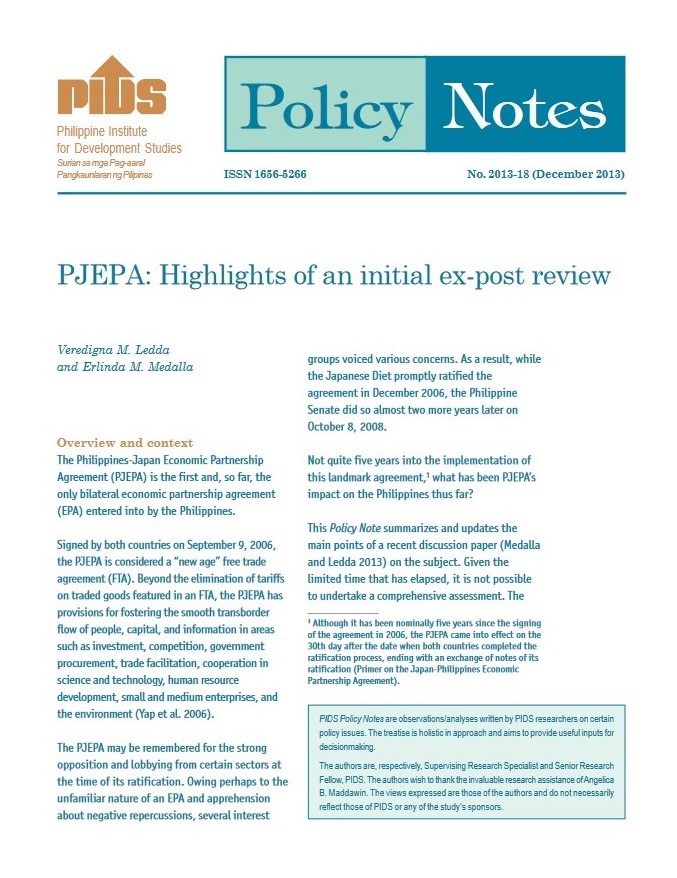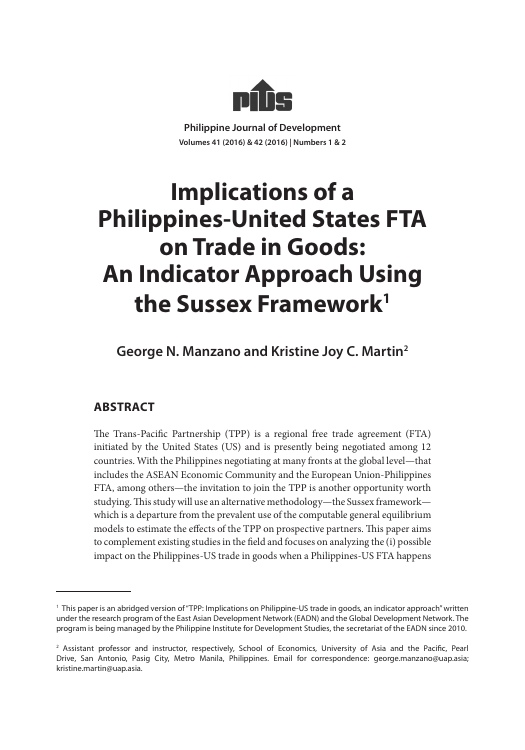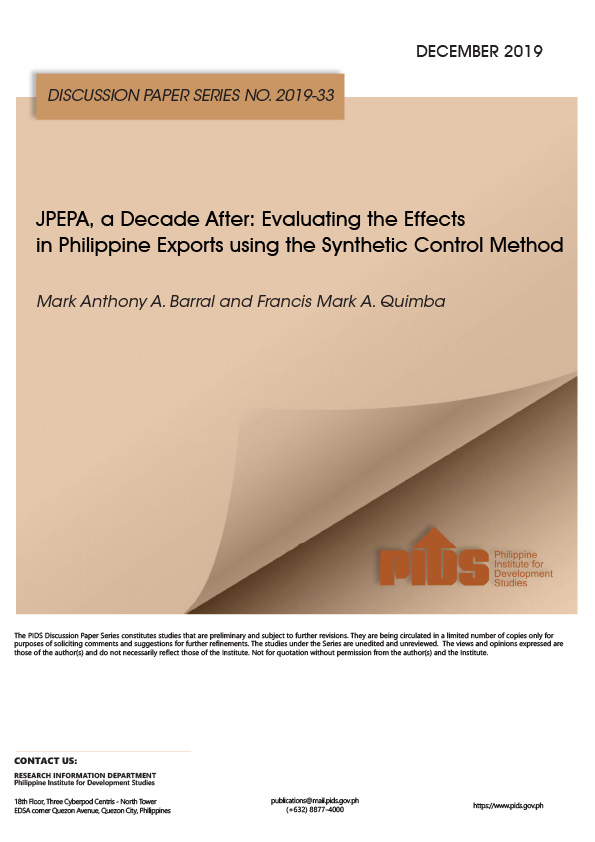Trade with nontraditional and distant markets has always been regarded as worth exploring in an effort to increase market shares amidst the downside effects of globalization and regional trade cooperation. While globalization processes paved the way for increased competition and opening up of markets, regional trade arrangements have emerged to accord certain markets with intrinsic advantages over others. The relationship between Latin American countries and the Philippines in the aspect of trade and investment is typically influenced by the developments brought about by globalization and regional trading arrangements. Historically, trade and investment performances have been modest in specific periods and for particular products. Not surprisingly, the trend in investments has also leaned towards particular areas of activities, and at times initiated by some bilateral agreements. Economic diplomacy between the Philippines and Latin American states deserves greater attention, with focus on products with distinct comparative advantages. The attempt in this study to measure the extent of economic integration, in both ways, is an indicator of where focus should be directed. A comparative derivation of this indicator, showing how other ASEAN countries pursue trade with the Latin American region is an interesting finding, from which lessons, experiences and strategies can be drawn. Regional trading arrangements work well in maximizing trade and investments benefits within the Latin American region. Some of the seemingly dynamic economies in Asia have already started entering into bilateral agreements with Latin American economies, realizing the immediate benefits to gain in the immediate term. Such agreements are usually spurred by intensive economic diplomacy, following a careful examination of characteristics in trade. The Philippines needs to strengthen its economic diplomacy with Latin America by carefully evaluating the intricacies in trade processes, given the distance factor, existing channels of cooperation, trade patterns and prevailing regional competition. Only then can a program-oriented bilateral agreement become more responsive to both markets.













